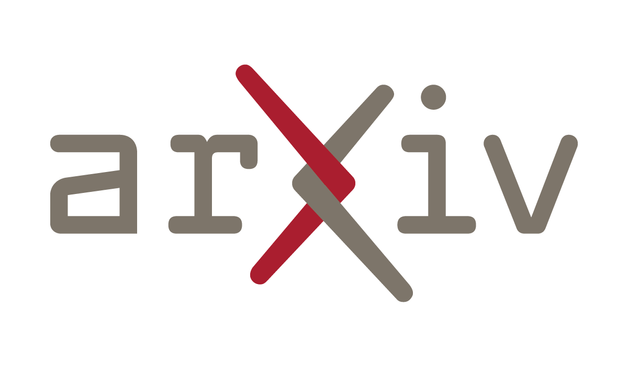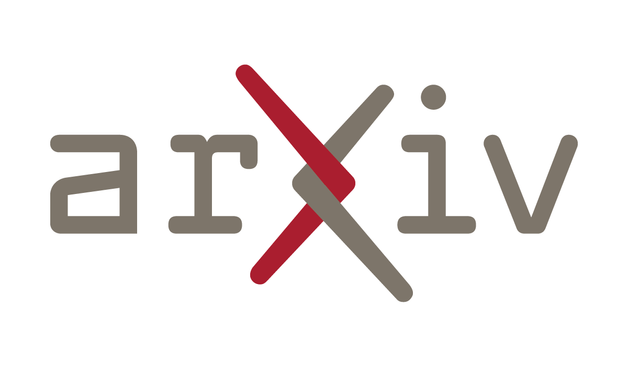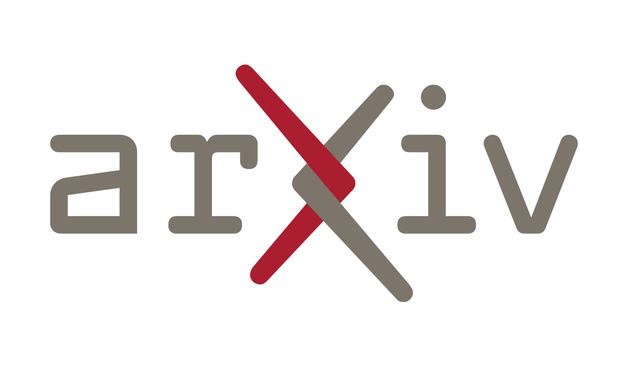Today on Women in Engineering Day, we celebrate the engineers who make LISA possible — and reaffirm our commitment to advancing equity in STEM and astronomy. 💫 #WomenInEngineering #LISA #STEMEquity
[posted by the LISA DEI Committee]
The LISA mission is about gravitational wave detection in space 🛰️ with 3 spacecraft millions of km apart exchanging laser light.
The LISA Consortium is a large international collaboration that combines the resources and expertise from scientists in many countries all over the world. Together with ESA, NASA and JAXA, the LISA Consortium is working to bring the LISA Mission to fruition.
Today on Women in Engineering Day, we celebrate the engineers who make LISA possible — and reaffirm our commitment to advancing equity in STEM and astronomy. 💫 #WomenInEngineering #LISA #STEMEquity
[posted by the LISA DEI Committee]
📣 Registration is now open for the 2025 #LISASchool! The LISA School will take place from 6–17 October 2025 at the École de physique des Houches, nestled in the beautiful French Alps 🏔️
👉 Register here: https://indico.in2p3.fr/e/lisa-school
🗓 Registration closes: 11 July 2025 (midnight CET)
🧑🔬 Capacity: ~50 early-career scientists (first-come, first-served)
Topics include: GW fundamentals, instrumentation, waveforms, data analysis, astrophysics, cosmology, and fundamental physics.
Logistics:
- Dates: 6–17 October 2025 (arrival on the 6th, departure on the 17th)
- Location: École de Physique Les Houches, Mont Blanc Valley
- Fee: EUR 900 – includes lodging, meals, coffee breaks, IT/library access
- Financial Support: Available on request in the pre-registration form
- Commitment: Full attendance required (no partial participation)
📽️ Sessions will be recorded for wider public access!
In this episode of #LECSTalks we feature Maria Işfan, PhD student at University of Bucharest, who recently gave LISA Early Career Scientists a talk titled "Quantum Neural Networks for LISA Low-Latency Data Analysis Pipelines".
You can watch the talk on YouTube 📽 https://youtu.be/hStfmWsHlKo 📽
🎤 Tell us something about yourself
I am a PhD student at University of Bucharest and also a research assistant at the Institute of Space Science - a subsidiary of INFLPR in Romania. In my free time, I play guitar.
🎤 What can you tell us about Quantum Neural Networks for LISA Low-Latency Data Analysis Pipelines?
Quantum computing is advancing rapidly, allowing computational speed-ups. As LISA will require fast data processing, we are exploring how quantum neural networks (QNNs) can help gravitational waves (GWs) data analysis. QNNs can learn patterns faster and handle noisy or limited data better than classical methods. In our proof-of-concept studies, we trained QNNs on simulated gravitational-wave signals and achieved accurate signal classification. We also used QNNs to successfully identify most of the GWs signals in the Sangria LISA Data Challenge. These promising results suggest that QNNs could be a powerful tool in LISA’s low-latency data analysis pipeline.
The #LISACommunity recently hosted a talk by Ollie Burke about a paper by Ollie Burke, Sylvain Marsat, Jonathan R. Gair, Michael L. Katz: "Mind the gap: addressing data gaps and assessing noise mismodeling in LISA", which can be found here 👉 https://arxiv.org/abs/2502.17426
Here's a summary of the paper:
"Communication outages and malfunctions for complicated space-missions are simply an inevitability. Although talented personnel will craft an instrument that runs as smoothly as possible, the space-based gravitational wave observatory LISA will be no outlier — LISA will observe gaps and gremlins in the data. These artefacts could violate a number of assumptions scientists usually place on the data prior to analysis, potentially hampering our ability to extract gravity waves from the data that are generated from collisions of the most extreme compact objects within our universe. This talk (with associated paper) details calculations, theory and computational techniques that can be used to mitigate the impact of data gaps on LISA-based gravitational wave data analysis."
Here's a summary of the paper:
"To date, black holes remain among the most enigmatic objects in our universe. Thanks to gravitational wave detections, we have taken significant steps toward “illuminating” their hidden structure. However, the wealth of information contained in these signals is far from fully explored. With the precision of the upcoming LISA mission, we may gain access to gravitational waves from black hole mergers that probe the interface between gravity and quantum phenomena. In particular, we show that the so-called echo effect—repeated wave signals from a single merger, arriving at Earth with short time delays—could be detectable by LISA for sufficiently strong events. Encoded within these echoes is potentially profound information, offering new insights into the quantum aspects of black holes and the fundamental nature of spacetime."
The #LISACommunity recently hosted a talk by David Maibach about a paper by Nils Deppe, Lavinia Heisenberg, Henri Inchauspé, Lawrence E. Kidder, David Maibach, Sizheng Ma, Jordan Moxon, Kyle C. Nelli, William Throwe, Nils L. Vu: "Echoes from Beyond: Detecting Gravitational Wave Quantum Imprints with LISA", which can be found here 👉 https://arxiv.org/abs/2411.05645
Here's a summary of the paper:
"LISA science is technologically demanding. Distances between two test masses separated by 2.5 million kilometers need to be measured to high precision. LISA will use laser interferometry for this. We must overcome several undesired effects to reach the required sensitivity. One of these is tilt-to-length coupling (TTL). TTL summarizes disturbing effects on the optical path lengths and effects related to the measurement of the laser beam's wavefronts. We anticipate that some of this noise cannot be avoided, so we developed a strategy to mitigate the remainder in data post-processing & validated it on simulated data which now includes gravitational wave signals. Our current results confirm that we will have this disturbance under control. Nonetheless, our modeling is constantly evolving, so stay tuned for updates!"
The #LISACommunity recently hosted a talk by Sarah Paczkowski about a paper by Marie-Sophie Hartig, Sarah Paczkowski, Martin Hewitson, Gerhard Heinzel, Gudrun Wanner: "Post-processing subtraction of tilt-to-length noise in LISA in the presence of gravitational wave signals", which can be found here 👉 https://arxiv.org/abs/2411.14191 and https://journals.aps.org/prd/abstract/10.1103/PhysRevD.111.043048

The Laser Interferometer Space Antenna (LISA) will be the first space-based gravitational wave (GW) observatory. It will measure gravitational wave signals in the frequency regime from 0.1 mHz to 1 Hz. The success of these measurements will depend on the suppression of the various instrument noises. One important noise source in LISA will be tilt-to-length (TTL) coupling. Here, it is understood as the coupling of angular jitter, predominantly from the spacecraft, into the interferometric length readout. The current plan is to subtract this noise in-flight in post-processing as part of a noise minimization strategy. It is crucial to distinguish TTL coupling well from the GW signals in the same readout to ensure that the noise will be properly modeled. Furthermore, it is important that the subtraction of TTL noise will not degrade the GW signals. In the present manuscript, we show on simulated LISA data and for four different GW signal types that the GW responses have little effect on the quality of the TTL coupling fit and subtraction. Also, the GW signal characteristics were not altered by the TTL coupling subtraction.
The #LISACommunity recently hosted a talk by Jan Niklas Reinhardt on a paper by Jan Niklas Reinhardt, Olaf Hartwig, Gerhard Heinzel: "Clock synchronization and light-travel-time estimation for space-based gravitational-wave detectors", linked here 👉 https://arxiv.org/abs/2408.09832 and https://iopscience.iop.org/article/10.1088/1361-6382/ada2d3
Here's a summary of the paper:
"Space-based gravitational-wave detectors, such as LISA, record interferometric measurements on widely separated satellites. Their clocks are not actively synchronized. Instead, clock synchronization is performed in on-ground data processing using pseudorange measurements, which entangle the interspacecraft ranges with the relative clock desynchronizations. To achieve clock synchronization between the spacecraft, we need to isolate these clock desynchronizations by disentangling the pseudoranges. We introduce a nonstandard Kalman filter algorithm for this purpose, designed for systems where pseudorange measurements are taken in different time frames. This algorithm enables clock synchronization and light travel time estimation with sub-meter accuracy."

Space-based gravitational-wave detectors, such as LISA, record interferometric measurements on widely separated satellites. Their clocks are not synced actively. Instead, clock synchronization is performed in on-ground data processing. It relies on measurements of the so-called pseudoranges, which entangle the interspacecraft light travel times with the clock desynchronizations between emitting and receiving spacecraft. For interspacecraft clock synchronization, we need to isolate the differential clock desynchronizations, i.e., disentangle the pseudoranges. This further yields estimates for the interspacecraft light travel times, which are required as delays for the laser frequency noise suppression via time-delay interferometry. Previous studies on pseudorange disentanglement apply various simplifications in the pseudorange modeling and the data simulation. In contrast, this article derives an accurate pseudorange model in the barycentric celestial reference system, complemented by realistic state-of-the-art LISA data simulations. Concerning pseudorange disentanglement, this leads to an a priori under-determined system. We demonstrate how on-ground orbit determinations, as well as onboard transmission and on-ground reception time tags of the telemetry data, can be used to resolve this degeneracy. We introduce an algorithm for pseudorange disentanglement based on a nonstandard Kalman filter specially designed for clock synchronization in systems where pseudorange measurements are conducted in different time frames. This algorithm achieves interspacecraft clock synchronization and light travel time estimation with submeter accuracy, thus fulfilling the requirements of time-delay interferometry.
The #LISACommunity recently hosted a talk by Valerio De Luca on a paper by Valerio De Luca, Justin Khoury, Sam S. C. Wong: "Gravitational memory and soft theorems: the local perspective", linked here 👉 https://arxiv.org/abs/2412.01910 and https://arxiv.org/abs/2412.12273 (accepted in PRD at https://journals.aps.org/prd/accepted/76071Qd0M2118331f5b87943d34c36b167b45d9d9)
Here's a summary of the paper:
"Gravitational memory describes the lasting effect on freely falling detectors after a gravitational wave passes by, and it has been intimately connected to asymptotic symmetries and soft theorems.
In this talk, we will explore a new symmetry perspective of gravitational memory in synchronous coordinates, which are relevant for detectors like LISA.
We will show how memory ties to residual coordinate transformations, such as volume-preserving spatial rescalings, and we will derive the corresponding soft theorems for both scattering amplitudes and correlation functions. The latter are recognized as the flat-space analog of soft theorems in inflationary cosmology."

In general relativity, gravitational memory describes the lasting change in the separation and relative velocity of freely falling detectors after the passage of gravitational waves (GWs). In this paper, we elucidate the relation between Bondi-Metzner-Sachs transformations at future null infinity and the description of gravitational memory in local synchronous coordinates, commonly used in GW detectors like LISA. We show that gravitational memory corresponds to large residual diffeomorphisms in this gauge, such as volume-preserving spatial rescalings. We reproduce the associated soft theorems for scattering amplitudes. Finally, we derive novel soft theorems for equal-time (in-in) correlation functions, which are recognized as the flat space analogues of inflationary consistency relations with a soft tensor mode. These relations provide a pathway toward uncovering deeper connections between gravitational memory and cosmological correlators.